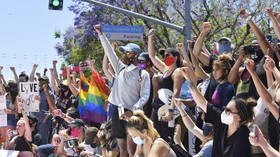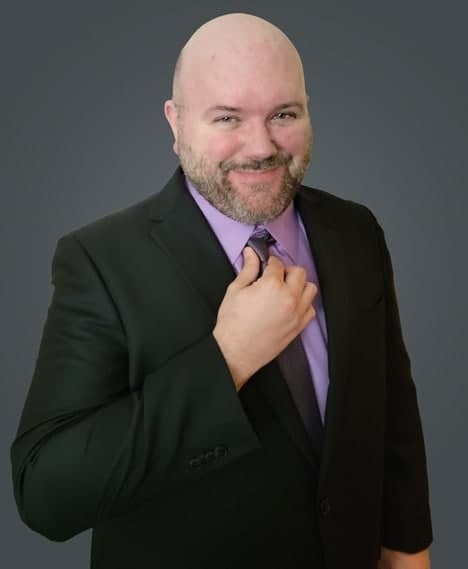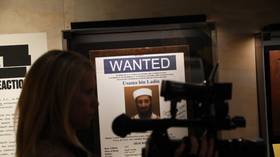Hollywood’s hollow virtue signaling in making random characters gay, does nothing to help progress the LGBTQ cause

Movie bosses increasingly love to put gay characters into their films and TV shows, but it’s often just lazy and empty self-righteousness. Why can’t a character's sexuality be incorporated in a way that matters to the audience?
Two years out from its original release date and on its fifth attempt to make it into theaters, the film The New Mutants has finally arrived. Comic book fans have long awaited the premiere of the horror-themed superhero film since its trailer first debuted in front of IT: Chapter 1, way back in 2017.
Yes. 2017. Three years prior to its eventual release.
Rumors surrounded the film and its multiple release date delays, with the consensus being that the movie just wasn’t “very good” and was pushed back for extensive reshoots that never actually happened. Some even speculated that it may never be released at all, despite being part of the expensive acquisition of 20th Century Fox and all its properties by Disney.
Pitched as a ‘John Hughes teen movie in a haunted house,’ The New Mutants was set to kick off a new X-Men franchise based around younger characters. And while the movie itself is serviceable enough as an entertaining foray into teenage superhero angst, one of the biggest stand-out missteps in the film (among many) is the forced inclusion of a lesbian relationship between two of its leading characters.
It being the year 2020, it is safe to say that no one has much of a problem with showcasing gay characters or same-sex romantic relationships on screen. But the inclusion of such a relationship in the case of The New Mutants seemed to be “shoehorned” into the film for no other reason than the “representation” factor.
Indeed, this is part of a larger problem across other movies and television shows that appear to force in a gay character or gay romance subplot for no other reason than the ubiquitous “it’s the right thing to do.” Netflix’s original movies and series are particularly guilty of this practice, as the streaming giant appears to have a “woke checklist” of identitarian clichés it requires all its original works to have.
The Netflix checklist seems to go as follows: Does the film have a trans or non-binary character? Check. Does the film have people of color? Check. Is the film’s villain rich, white, male, or all of the above? Check. Are women made to look superior or more capable than their male co-stars? Check. And most of all – is there a gay (preferably lesbian) character and/or relationship? If so, check, Netflix approves!
In fact, the whole “slap a gay character” into the story has become so commonplace in Netflix offerings, it’s now a type of meme amongst those who “Netflix and Chill” regularly.
But Netflix isn’t the only culprit here. The “token gay character” epidemic spans all of Hollywood’s offerings. From the “inclusion” of a gay character in the last 5 minutes of The Rise Of Skywalker to the hint that Sulu is in a homosexual relationship in Star Trek Beyond, to even making Josh Gad’s character LeFou in the live-action version of Beauty and the Beast Disney’s first “openly gay character” (though you wouldn’t probably know it if you watched the movie).
Gay representation in media is not a bad thing, but the way Hollywood is utilizing it is. Because though the producers and writers of these films and TV shows claim it is for “representation,” the reality is that it is actually just lazy writing and a lack of imagination on the part of those making these entertainment offerings.
Whenever a writer or producer can’t think of anything interesting to do with a character, they simply choose to make him or her “gay” and allow that to be the single defining characteristic of that character without any further need for development. And so long as they can showcase a same-sex kiss or love scene every once and a while, the writers and producers can pat themselves on the back for being such a brave, progressive supporter of LGBTQ representation.
The fact is, the way most Hollywood writers, directors, and producers utilize gay characters is completely insulting and does nothing to champion or progress LGBTQ issues. In fact, it comes off more as tokenism and empty virtue signaling than anything else.
Also on rt.com Shia LaBeouf accused of brownface & Halle Berry quits her transgender role… to please woke crowds, we must simply #cancelactingSo is there a right way to incorporate LGBTQ characters into a film or television show? The answer is, of course, yes.
First, being gay should not be the defining characteristic of a character. Just like being straight doesn’t serve as a character’s entire identity. Rather, a character’s sexuality should be a part of an overall complex characterization but never the defining aspect of such characterization.
Second, a character’s sexuality should only be focused on if it is important to the progression of the story the character is in. In the case of The New Mutants, the lesbian relationship introduced in the film could have been entirely removed and the overall plot of the film would not have been affected.
Third, any homosexual relationships should be properly developed. Though the “insta-love” trope has always been used in films and television, because homosexual relationships are not considered “the norm,” it is important to set them up in such a way that they are believable to the audience. Suddenly making characters gay that never gave any indication that they were so previously is a sure-fire way to destroy an audience’s suspension of disbelief.
Fourth, LGBTQ characters should never be used to “virtue signal” in a story. They should be made an important part of the plot if they are to be included in a narrative. Simply putting an LGBTQ character into a movie for the sole purpose of “representation” does not actually help with representation. It is far better to have a well-defined character the audience can care about because they are important to the story, than a token character meant to throw a bone to a certain subsection of the population.
Lazy writing and hollow virtue signaling does nothing to help progress the cause of the LGBTQ community. If characters in movies and televisions shows are going to be gay, then they should be treated with respect and care to ensure they are strong, well-developed characters an audience can care about.
Otherwise, it is just pandering.
Think your friends would be interested? Share this story!
The statements, views and opinions expressed in this column are solely those of the author and do not necessarily represent those of RT.
















